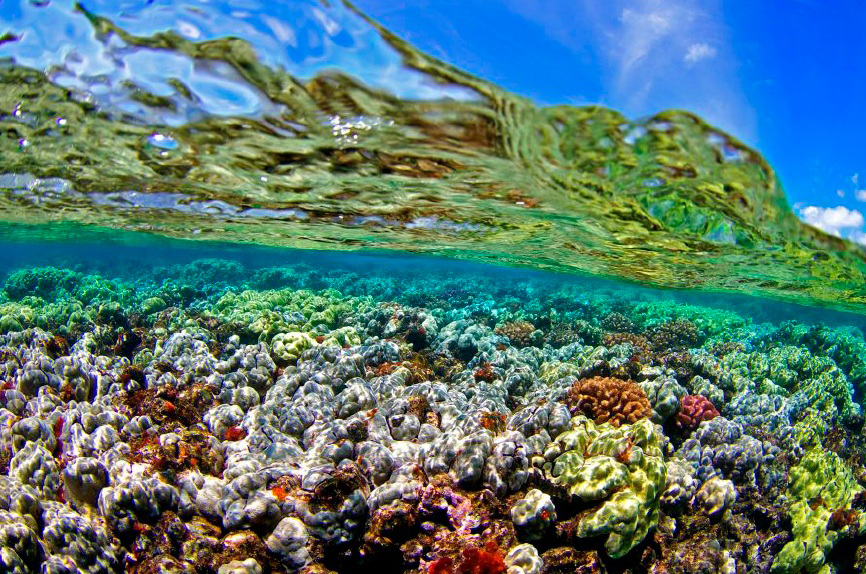Climate Change Will Not Spare an Inch of Global Ocean, Study Finds

Every corner of the world's oceans — from pole to pole and sea surface to seafloor — will undergo chemical changes associated with global climate change by 2100, jeopardizing the livelihoods of billions of people who subsist on marine ecosystems, according to a new study.
Previous studies addressing the effects of climate change on future ocean health have tended to focus on the effects of increased temperature and acidity on marine ecosystems. However, other oceanic conditions — including dissolved oxygen and productivity, or the abundance of tiny plant-like organisms that form the base of the marine food web — also play an important role in overall ocean health. As is the case on land, marine animals need oxygen and plant-life to survive. [Video: Humans Hit the Oceans Hard]
A team of 29 international scientists based at the University of Hawaii, Honolulu, have now developed more comprehensive projections of future ocean health, which take into account temperature, acidity, dissolved oxygen and productivity. To develop these projections, the researchers compiled more than 80,000 existing modeled maps of oceanic change, many of which informed the latest Intergovernmental Panel on Climate Change (IPCC) report.
The team found that mangrove and coral reef ecosystems near the tropics will likely experience the smallest cumulative change by 2100, whereas cetaceans (the group of mammals that includes whales, dolphins and porpoises), as well as pinnipeds (such as seals and walruses) will face the largest amount of change.
"We already knew that coral reefs are very susceptible to temperature change, and our models show that they are going to be impacted the least," study co-author Camilo Mora, a researcher at the University of Hawaii, Honolulu, told LiveScience. "So you can imagine what it's going to be like for other ecosystems."
The team used the compiled maps to estimate the impact these changes will have on coastal human populations whose livelihoods depend on marine resources.
Researchers considered two different climate change scenarios: one in which humans significantly cut back carbon dioxide emissions and, as a result, global atmospheric carbon dioxide levels increase from the current 440 parts per million (ppm) to just 550 ppm; and one in which humans continue emitting carbon dioxide at the current rate, under a scenario known as "business as usual," which the IPCC projects will result in an atmospheric carbon dioxide accumulation of 900 ppm by the end of the century. (Parts per million is an indicator of the concentration of a chemical in, for example, air. So in this case, 440 ppm means that there are 440 molecules of carbon dioxide in every million molecules of air.)
Sign up for the Live Science daily newsletter now
Get the world’s most fascinating discoveries delivered straight to your inbox.
Under the 550-ppm scenario, the team estimated that 1.4 billion people would face considerable local oceanic change by 2100. Of those people, 690 million will live in countries with medium to high ocean dependence — a metric the researchers developed of the extent to which a society's jobs, revenue and food depend on the ocean.
Under a business-as-usual scenario, 2 billion people will face considerable oceanic change by 2100, with 1.12 billion of them living in countries with medium to high dependence on the ocean. Of those 2 billion people, 870 million will live in low-income countries with few resources to adapt to the projected changes.
The team notes that these estimates are rough, and that the specific ways in which ecosystems and communities adjust to change will remain largely unknown until the changes unfold.
Mora likens this uncertainty to the uncertainty of falling off of a ladder: Some sort of injury is inevitable, but the exact body part or degree of injury remains unpredictable until a person hits the ground.
"Systems are very complex," Mora said. "You can't tell what species are going to go extinct, or the response of a specific species, but you can expect these changes to be quite massive."
The researchers hope to continue synthesizing new data as it becomes available, in order to continue honing the precision of their predictions.
The new findings are detailed today (Oct. 15) in the journal PLOS Biology.
Follow Laura Poppick on Twitter. Follow LiveScience on Twitter, Facebook and Google+. Original article on LiveScience.










